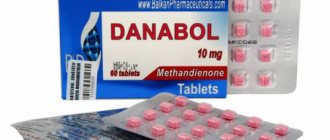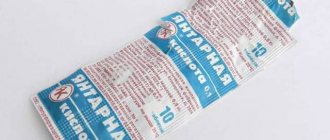Ammonia is a colorless gas with a rather specific and pungent odor. In medicine, it is often used to bring a person to consciousness during fainting (ammonia). Being one of the metabolic products in the human body, it also has an irritating effect on the mucous membranes. Ammonia poisoning most often occurs in people who, due to their professional duties, are in constant contact with this gas.
Ammonia is used in the production of varnishes, paints, fertilizers, and soda. There are also frequent cases of accidental exposure of gas to the eyes and ingestion; children are most often affected.
Application Features
The substance exists in a gaseous state, its density is half that of air. In the natural environment, ammonia is released during the decay of organic substances, and in industry it is obtained through chemical synthesis.
Ammonia is used quite widely:
- paint and varnish products;
- soil fertilizers;
- medications for medical purposes (ammonia, drugs for the treatment of neurological diseases);
- compositions for cleaning glass and tiles;
- explosive components;
- refrigeration equipment.
Any formulations containing this substance should be used very carefully, since ammonia vapor poisoning is extremely dangerous.
Toxic effect
Poisonous gas can enter the body through the respiratory tract, skin or mucous membranes. It is characterized by increased activity, so the initial signs of ammonia poisoning are recorded after a short period of time. Even short-term exposure to the toxin causes negative consequences.
The permissible level of substance content in the air is 20 mg/1m3. If this indicator is exceeded, poisoning is inevitable. Similar situations can occur during accidents at factories accompanied by gas emissions. Not only workers are affected, but also people nearby. It is possible to get poisoned during repair and other work that uses solvents.
A burn with ammonia occurs when it accidentally comes into contact with the skin, eyes or mucous membranes. Poisoning with ammonia even occurs if it is inhaled or ingested for a long time, and the rules for local use are violated.
Once in the circulatory system, the substance provokes a sharp dilation of blood vessels. A significant decrease in blood pressure causes collapse, since the body is not able to compensate for such a drop by activating heart contractions.
When exposed to the respiratory tract, the gas irritates the mucous membranes; its action leads to the rapid development of pneumonia and pulmonary edema. The nervous system also suffers.
The cause of death can be:
- respiratory muscle paralysis;
- collapse that cannot be treated;
- acute respiratory failure.
Causes
Ammonia poisoning has an ICD-10 code T43. Poisoning is classified as industrial or domestic. Causes:
- Leak at the plant. The situation causes poisoning to many people. First of all, the employees of the enterprise. If the spread is not stopped, residents of nearby settlements may become poisoned.
- Prolonged inhalation of vapors. Intoxication of the body occurs. Ammonia poisoning is created as a result of prolonged inhalation of ammonia vapor.
- Entry into the digestive system. The phenomenon is less common. It is usually the person himself who is to blame.
- Careless use of solvents. The basis of household solvents is ammonia. When working with such substances yourself, it is easy to get poisoned if handled carelessly.
- When ammonia gets into the eyes, a person gets a chemical burn.
- Violation of safety regulations at an industrial enterprise. As a result, ammonia leaks and poisoning occurs.
- When carrying out plumbing work. In sewers, it is necessary to protect the respiratory tract with special protective equipment. While performing activities, a person may come to areas of large ammonia vapors. If you don't have protective equipment, you can get gas poisoning.
Symptoms of poisoning
Symptoms of inhalational ammonia poisoning include:
- lacrimation and photophobia, spasm of the eyelids, pain in the eyes;
- excessive salivation and runny nose;
- redness of the skin, visible mucous membranes and conjunctiva;
- sore throat, hoarseness of voice;
- painful sensations in the nasopharynx;
- attacks of suffocating cough (dry, and later wet);
- breathing problems, shortness of breath;
- feeling of pain and tightness in the chest;
- severe headaches;
- psychomotor agitation, delirium, convulsions;
- a sharp increase in sensitivity to sound stimuli: the patient suffers painfully even from quiet sounds.
Dyspeptic disorders are possible: abdominal pain, diarrhea, vomiting.
With chronic exposure to poisonous gas, hearing decreases, breathing and digestion are impaired.
Skin contact with an ammonia solution causes a chemical burn: blisters appear on the affected area, and after they are opened, crusts form.
If the eyes are damaged, a person may lose vision.
If you drink ammonia, the substance causes nausea, vomiting, acute pain in the stomach, and cramps of all muscle groups. Internal bleeding and loss of consciousness may develop.
The severity of ammonia poisoning is determined by the concentration of the substance and the speed of medical care. The consequences of ammonia poisoning are very serious, and death is possible.
Acute injuries from poisonous gas occur when cleaning cesspools and sewer pipes. Mild poisoning is indicated by non-stop coughing, constant sneezing, lacrimation, and rhinorrhea (profuse mucous discharge from the nose). Moderate severity of damage is characterized by swelling of the laryngeal tissue with a suffocating cough and sore throat. Delusional states, convulsions, urinary retention, eye burns and cardiovascular disorders occur in severe poisoning.
What happens during ammonia intoxication?
There are several ways a toxic substance can enter the human body:
- skin contact
- entry into the respiratory tract,
- ingestion through the gastrointestinal tract,
- contact with the mucous membranes of the eye.
Usually, with contact with household products and prompt first aid, a person quickly recovers. But if intoxication occurred at a specific enterprise, then the symptoms and consequences will be more pronounced. Because of this, many are interested in the algorithm of actions in an unforeseen situation. If there is an ammonia release, what should you do?
It is extremely important to begin providing first aid before the medical team has time to reach the scene of the incident. The speed of action will determine how much the patient will suffer and how quickly he can recover during the rehabilitation course.
If you delay in providing assistance, this may lead to neurological disorders in the future. In especially severe cases, even partial memory loss and other serious pathologies are possible.
People who work in enterprises closely associated with the use of ammonia, if they ignore safety regulations, may over time begin to experience problems with hearing and visual acuity.
Since with frequent contact with poison a person loses immunity, he becomes predisposed to various diseases of the respiratory system. This can be either a banal acute respiratory infection or more serious diseases such as tuberculosis, pleurisy or inflammation of the nasopharynx. In the most dangerous case, catarrh of the respiratory tract and the provocation of cancer are possible.
It is no less dangerous to simply touch a toxic product. Such experiments can result in chemical burns, which are much more difficult to treat than classic burns. And if you take the solution internally, it will result in significant eating disorders and disruption of the functioning of the gastrointestinal tract.
If a patient experiences an acute form of intoxication, it usually ends in heart failure and death.
First aid for ammonia poisoning
Action should be taken immediately. First you need to call the doctors, and then take the victim out of the room into fresh air. First medical aid for ammonia intoxication is provided in the following order:
- Rinse the mouth and nose, as well as the nasopharynx with a weak (5%) solution of citric acid.
- Rinse the eyes with running water, apply a cotton-gauze bandage to the eyelids.
- Rinse exposed areas of the body with water and apply a bandage if there are burn blisters.
- If ammonia is taken orally, the victim should rinse the stomach: give him to drink at least 2 liters of water (pure or acidified with lemon juice, citric acid) and then induce vomiting.
- If breathing stops, you must immediately begin artificial respiration using the mouth-to-mouth method.
If a specific odor is detected within the premises, respiratory protection will help prevent exposure to the gas. For these purposes, use a bandage made of cloth or gauze, which must be moistened with weak solutions of acids: acetic or citric.
When is medical help needed?
In case of ammonia poisoning, medical attention is always necessary; the prognosis largely depends on the timeliness of treatment.
The victims are advised to be hospitalized in the toxicology department. During the day they must observe strict bed rest, even if the symptoms of intoxication are not pronounced.
Treatment is symptomatic. Severe laryngospasm may require a tracheostomy. According to general rules, treatment of burns of the skin and cornea is carried out. To prevent the development and treatment of pneumonia, broad-spectrum antibiotics are indicated.
Treatment in a hospital setting
Medical care for victims of ammonia exposure includes the use of an oxygen mask to aid breathing.
There is no specific antidote for ammonia, so symptomatic therapy, including detoxification, is carried out. If laryngospasm occurs, inhalation of prednisolone or dexamethasone is used through a nebulizer. Bronchodilators (aminophylline, salbutamol) are administered intravenously. If there is no effect from drug therapy, tracheostomy or tracheal intubation is performed and the victim is transferred to artificial pulmonary ventilation (ALV).
Measures are taken to stabilize blood pressure and heart rate.
For severe pain, narcotic analgesics (morphine, promedol, fentanyl) are administered intravenously or intramuscularly.
Drugs from the benzodiazepine group are prescribed for psychomotor agitation of the patient.
The doctor determines the optimal therapeutic regimen to normalize the victim’s condition. If at the same time there is a release of another toxic substance at the enterprise that can harm the body, additional antidotes are used.
Even with a slight effect of the toxin on the first day after exposure, a person needs absolute rest. In any case, you will have to visit a doctor as soon as possible. Most victims require hospitalization.
Antidote
An antidote is a specific substance that binds and neutralizes poison. The mechanism of action of neutralizing agents is based on physical and chemical contact with various toxins. As a result of the interaction, the poison is neutralized.
High-quality counteraction to ammonia is carried out using an antidote. An alternative may be specific mixtures and products that can neutralize poisonous compounds. Sucrose, vitamin B, C and glucose act as antidotes. The drugs are often used in various forms of poisoning.
The mechanism for effectively treating ammonia poisoning with antidotes includes several options:
- intravenous injection includes the administration of 1 ml of atropine solution (0.1% concentration) and 1 ml of morphine (0.1% content of the active substance);
- gastric lavage through a special tube. 100 ml of emulsion is poured into the device. Doctors prescribe Droperidol in combination with Fentanyl every 8 hours. It is allowed to administer “Diphenhydramine” or “Gipolfen” under the skin;
- intravenous infusion with solutions of Hemodez, Sodium Hydrocarbonate and Potassium Chloride;
- taking calcium gluconate. Doctors give injections into the muscle in a volume of 10 ml. Vitamins can be used in combination;
- antihistamines.
If your body is affected by poison, visit a qualified doctor and undergo a detailed diagnosis. The doctor will prescribe the treatment; medications can be purchased at the pharmacy.
Consequences of intoxication
The toxicity of ammonia is so high that some consequences (mainly neurological) can appear after a long time:
- disorientation in space;
- imbalance;
- tremor of the limbs;
- loss of skin sensitivity;
- amnesia;
- tics;
- dizziness;
- decreased intelligence.
When intoxicated with ammonia, the middle ear is affected until deafness occurs, and exposure to vapors on the eyes causes decreased vision and even blindness.
Complications from toxic exposure to ammonia can be prevented through timely first aid.
Consequences of damage to the body by ammonia
If contact with ammonia was prolonged and its concentration exceeded the permissible values several times, consequences are possible that will aggravate a person’s life:
- Complete loss of vision when the substance comes into contact with the mucous membrane of the eye and burns it.
- Pathologies of the respiratory organs, leading to frequent illnesses due to decreased immunity.
- Development of diseases in the gastrointestinal tract.
- Neurological disorders, because ammonia has a detrimental effect on nerve cells.
- Memory loss, decreased concentration, absent-mindedness.
- Headache.
- Lethal outcome if help is provided late or the degree of intoxication is high.
Only prevention and compliance with banal safety measures can prevent the consequences.
Prevention rules
Following safety rules helps prevent toxic gas from entering the body. When working with paint and varnish products and solvents, you must:
- put gloves on your hands;
- use special glasses;
- use respirators and masks;
- try not to inhale the vapors of the substance.
When working with gas in production, special shoes and clothing made of rubber protective materials are required. Do not smoke as ammonia is highly flammable. If there is a gas leak, you should try to stop the process. To do this, they spray water from a long distance or use special foam.
In emergency situations, you need to cover your mouth and nose with moistened material and quickly leave the area. It is best to go to the basement or to the lower floor, since the density of the substance is lower than air, and the gas rises to the top. The same measures are taken in open spaces.
The effect of ammonia on the human body poses a serious threat to life. Everyone should know what to do in case of ammonia poisoning, how to help themselves and others. Often timely measures taken help save lives.
Features of hydrogen nitride and its scope of use
Ammonia is a gas that has no color, but has a pronounced suffocating odor. It is impossible to confuse this chemical substance. Hydrogen nitride is used in liquid form as part of household solvents. Its concentration in household chemicals reaches 25-30%. The chemical compound is most often found in solution form in solvents and cleaners for industrial use.
Gas in its pure form is not used, as it has a negative toxic effect on human health. This factor does not prevent people from using hydrogen nitride for the manufacture of finishing and paint materials. In traditional medicine, ammonia is known as ten percent ammonia. The solution is used to bring a person to consciousness during a fainting state or to stimulate vomiting in case of poisoning and other pathologies. For the treatment of neurology and myositis in medicine, agents are often used in the form of liniment, which includes ammonia, and therefore ammonia.
Content:
- Features of hydrogen nitride and its scope of use
- How can a person become poisoned by ammonia?
- Symptoms of chemical poisoning
- First emergency aid for ammonia poisoning
- What to do after poisoning?
- About the consequences
- Preventive measures
In addition, the concentrated solution is used to fertilize land. The gas is used to make explosives, and ammonia is also needed to make freezers and refrigerators. In domestic conditions, hydrogen nitride is used to clean surfaces or fabrics from paint, coffee, varnish, oil and grease stains, mold and milk. Cleaners often use a concentrated solution to wash tiles, floors and glass.
Although ordinary people rarely encounter toxic fumes in their daily lives, they still need to be very careful with products that contain ammonia. Correct and timely provision of first aid for hydrogen nitride poisoning can save a person’s life and minimize possible complications.











